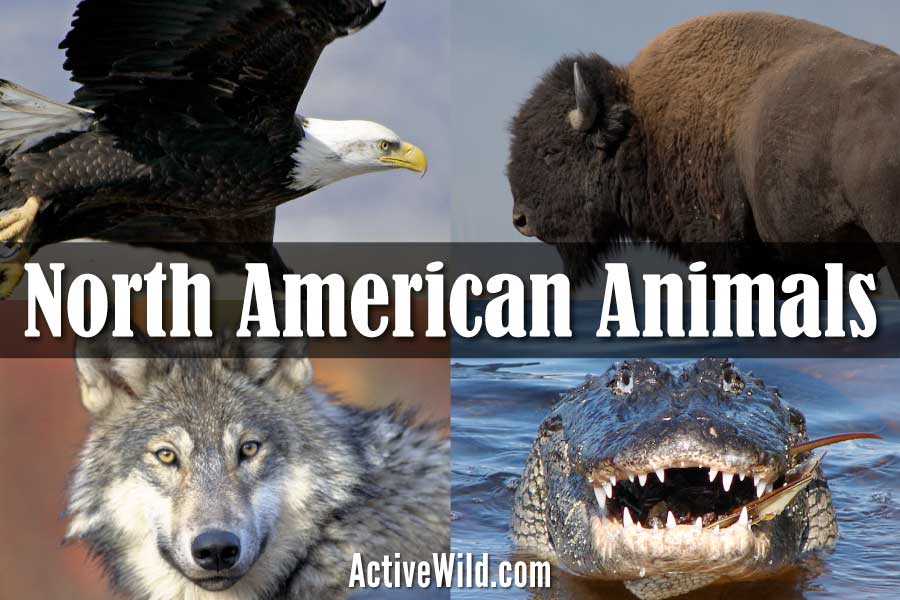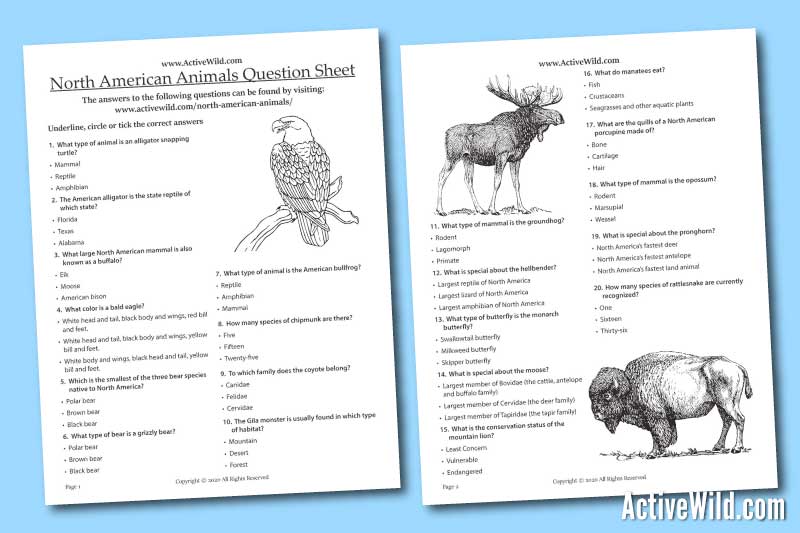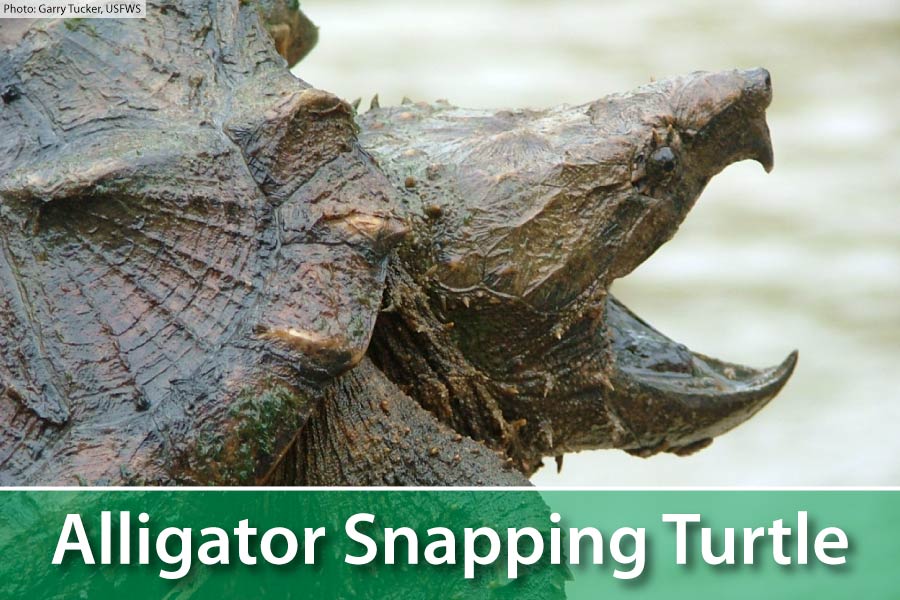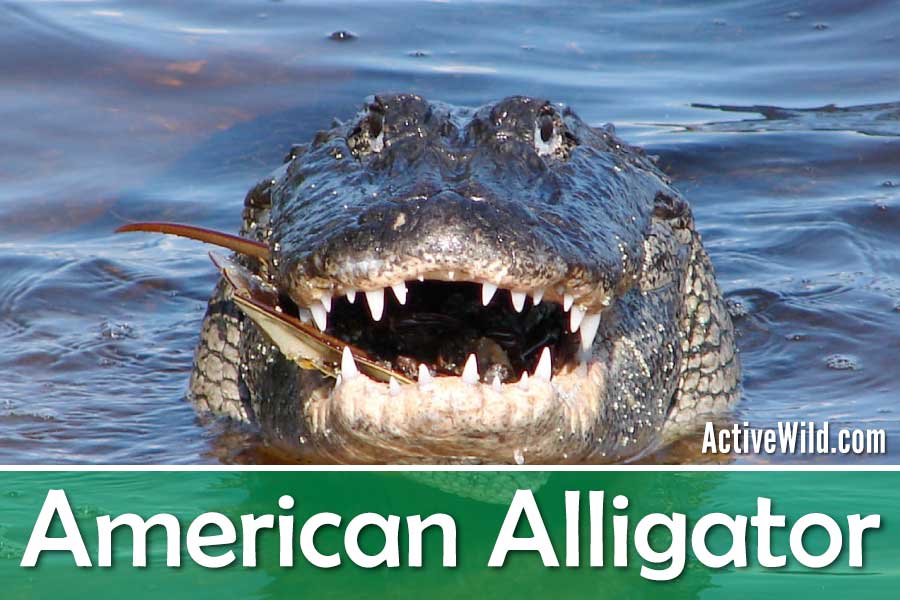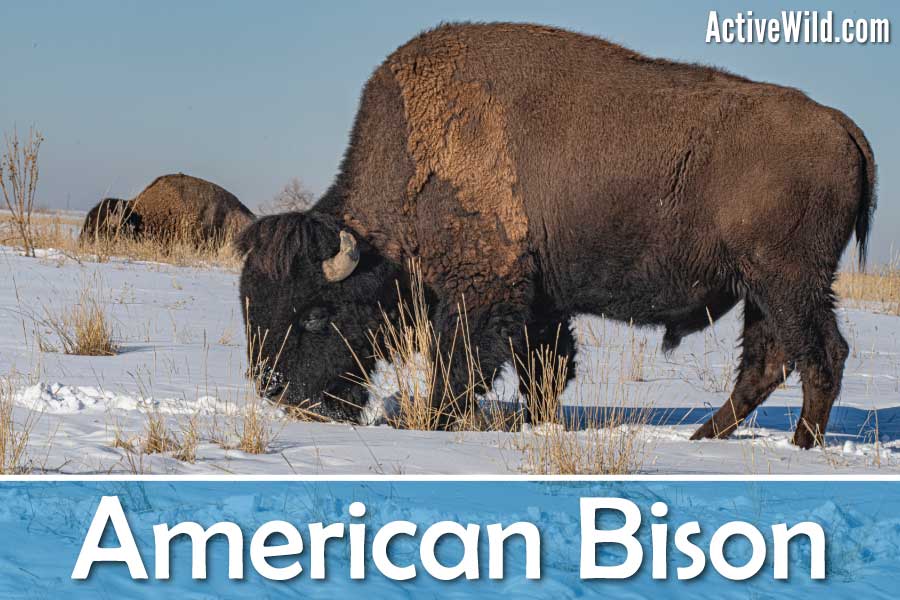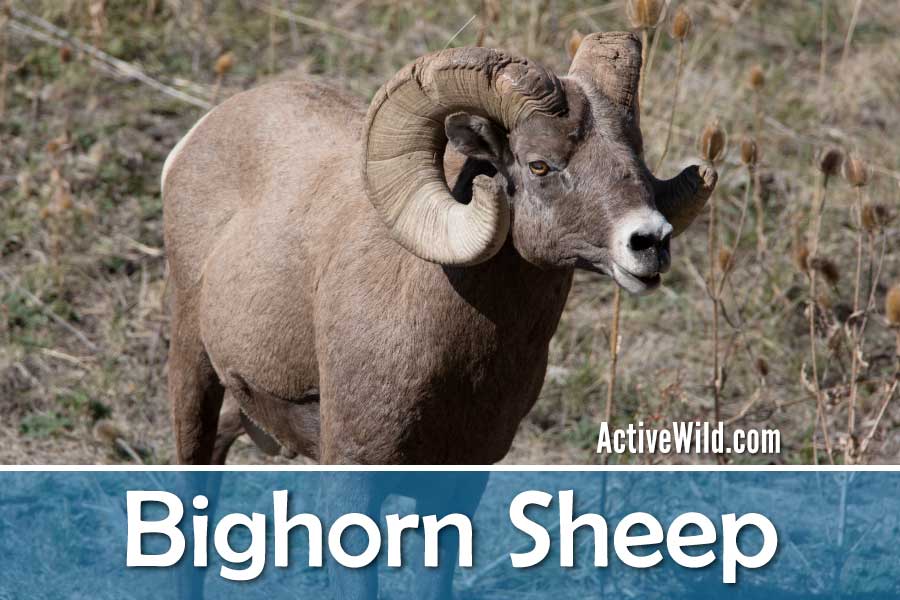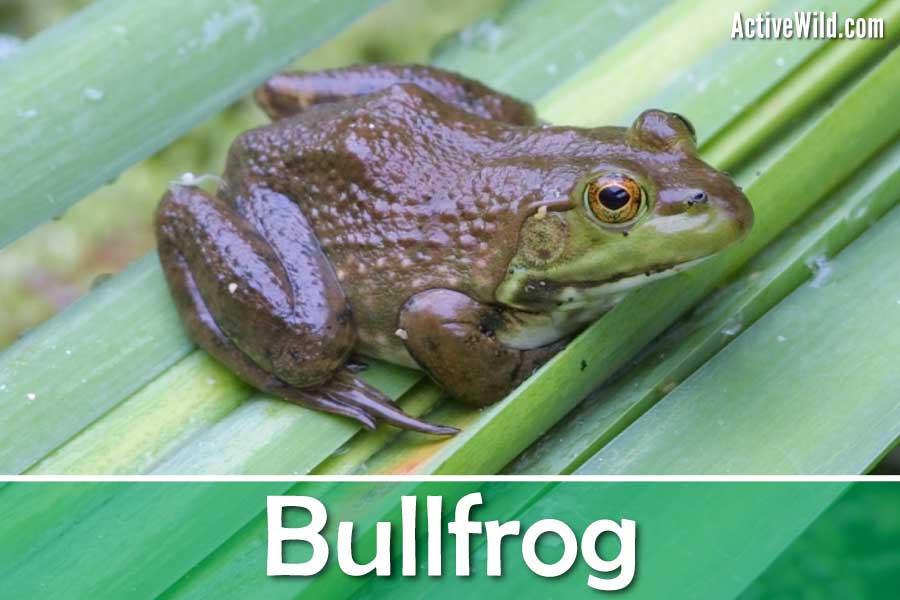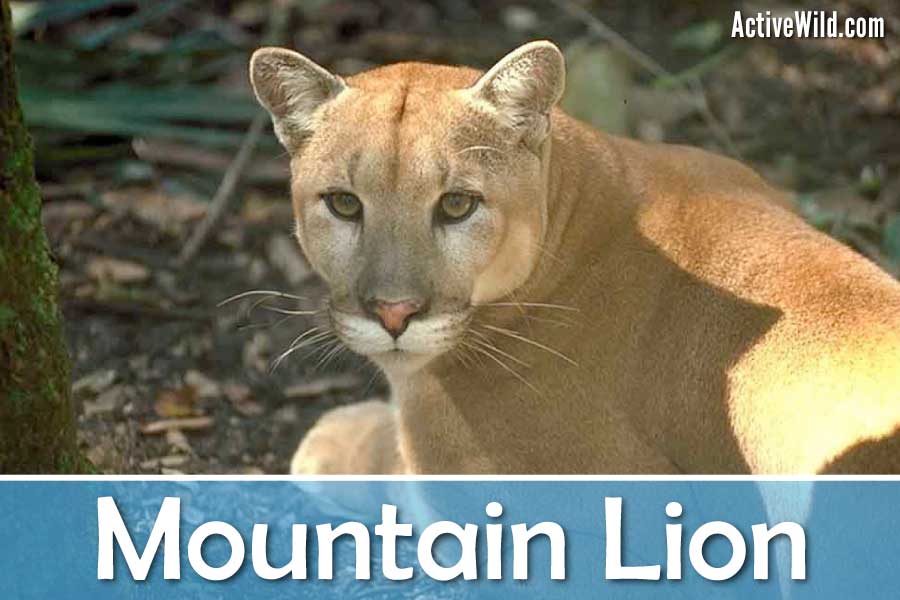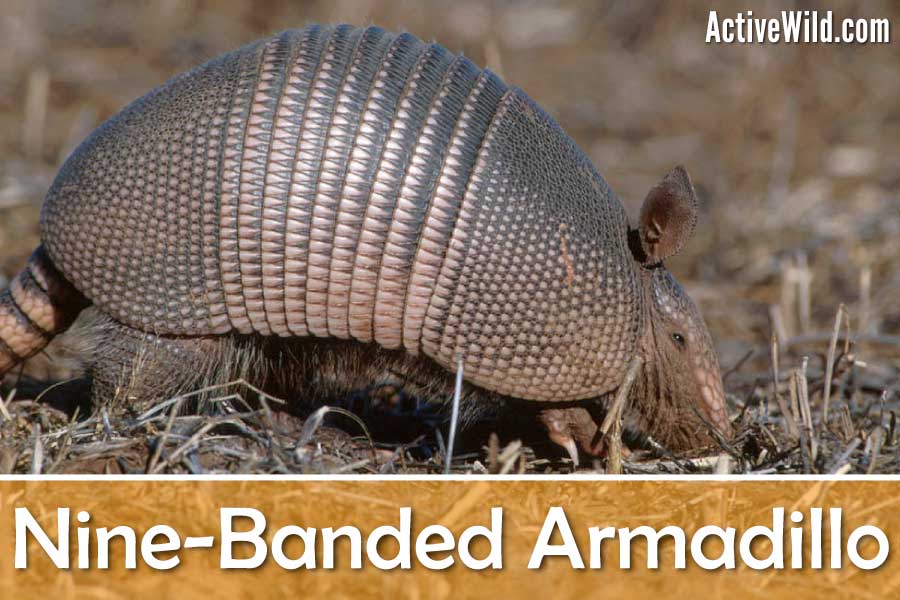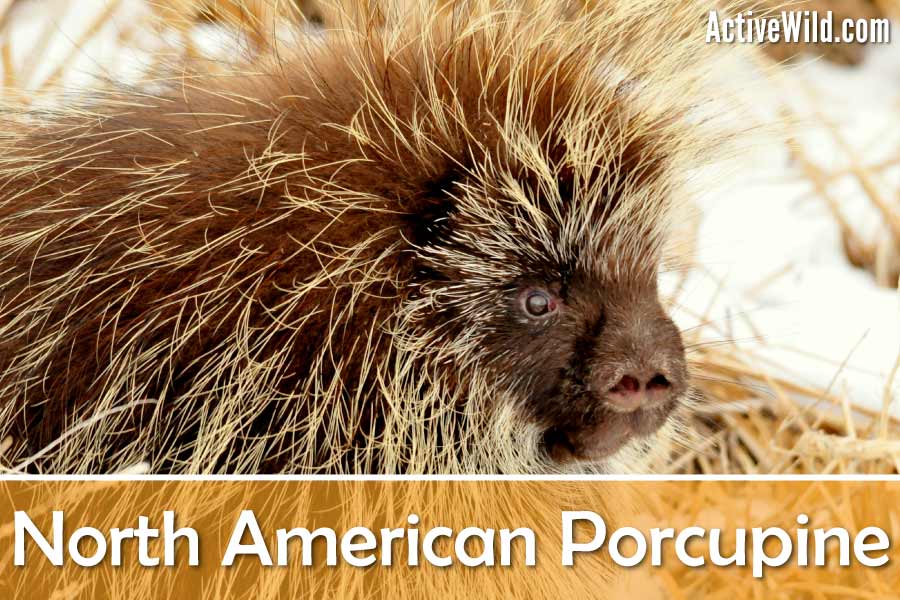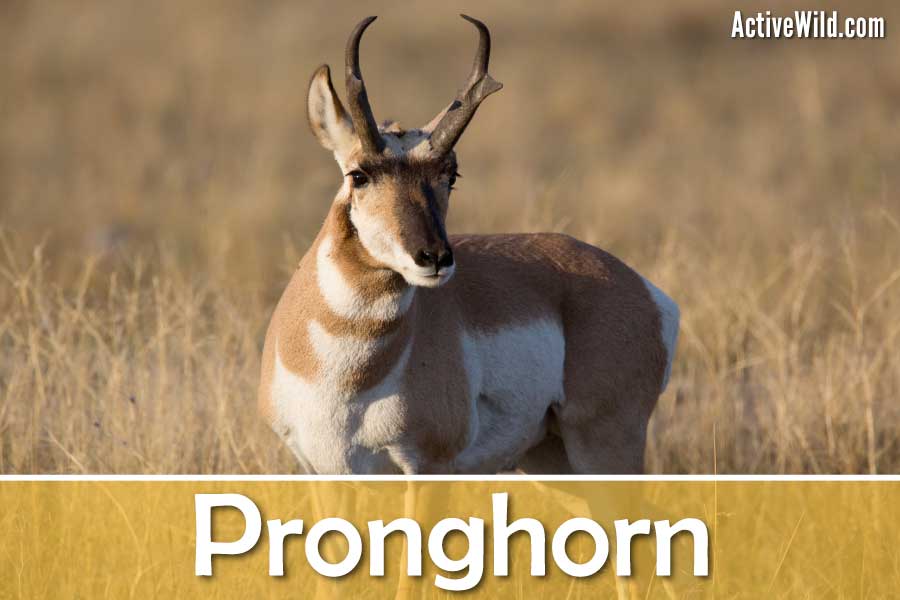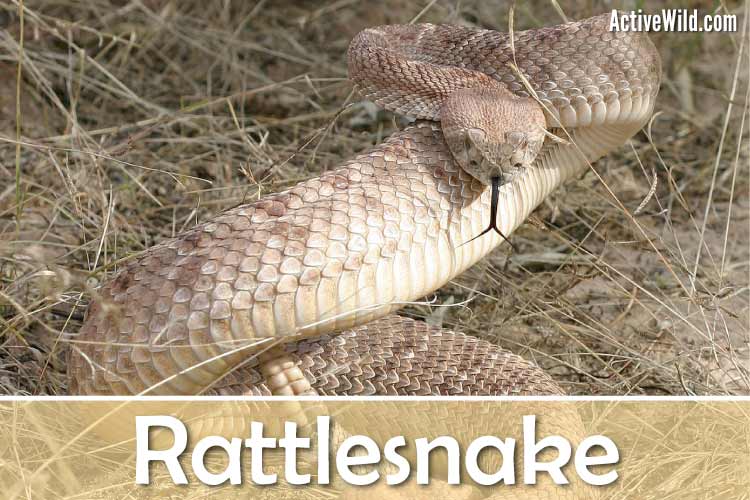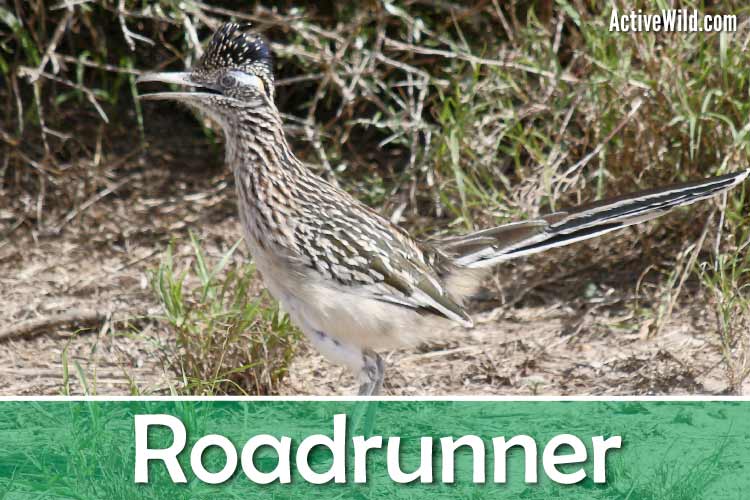Iconic North American animals include the American bison, bald eagle, American alligator, grizzly bear, mountain lion, monarch butterfly, wolf, coyote, groundhog, roadrunner, moose, raccoon and bobcat.
On this page is a North American animals list with pictures and facts on each species. Follow the links for further information on particular animals.
What's your favorite North American animal? Have you ever seen any of the animals on this list? Let us know in the comments section at the bottom of the page!
North American Animals Printable Worksheet
Click here or on the image above to view/download a printable North American animals worksheet for use with this page.
Page Index
Use the links below to go straight to a particular animal, or continue scrolling to find out about all of the animals on the list...
- Alligator Snapping Turtle
- American Alligator
- American Bison
- Atlantic Horseshoe Crab
- Bald Eagle
- Bighorn Sheep
- Black Bear
- Bobcat
- Brown Bear
- Bullfrog (American)
- Chipmunk (Eastern)
- Coyote
- Elk
- Gila Monster
- Groundhog
- Hellbender
- Kit Fox
- Monarch Butterfly
- Moose
- Mountain Lion
- Nine-Banded Armadillo
- North American Manatee
- North American Porcupine
- Virginia Opossum
- Polar Bear
- Pronghorn
- Raccoon
- Western Diamondback Rattlesnake
- Roadrunner (Greater)
- Wolf
Related Pages on Active Wild
- Check out our FREE North American Bird Quiz app for Android
- See a selection of recommended field guides: North American Wildlife Field Guides
- Discover North America's amazing reptiles: North American Reptiles List with Pictures and Facts
- Discover North America's amazing amphibians: North American Amphibians List with Pictures and Facts
Discover Amazing Animals From All Around The World
- African Animals
- Antarctic Animals
- Arctic Animals
- Asian Animals
- Australian Animals
- European Animals
- South American Animals
Iconic Animals Of North America List
Alligator Snapping Turtle
- Scientific name: Macrochelys temminckii
- Type of animal: Reptile
- Family: Chelydridae
- Conservation status: Vulnerable
The alligator snapping turtle is the world’s largest freshwater turtle. Exceptionally large individuals can reach weights of over 220 lb. (100 kg). This prehistoric-looking North American reptile is found in rivers and streams in the southeastern United States.
The alligator snapping turtle has a worm-shaped appendage on its tongue. This is used to lure fish within range of the turtle’s powerful jaws.
- You can find out more about the alligator snapping turtle on this page: Alligator Snapping Turtle Facts
- Discover more North American reptiles on this page: North American Reptiles List with Pictures & Facts
- Return to page index
American Alligator
- Scientific name: Alligator mississippiensis
- Type of animal: Reptile
- Family: Alligatoridae
- Conservation status: Least Concern
The American alligator is large predatory reptile found in the southeastern United States from North Carolina to the Rio Grande, and in the northeastern Mexican state Tamaulipas. It is one of two crocodilians native to the US (the other being the American crocodile), and one of only two living alligators (the other being the Chinese alligator).
This iconic North American animal is the state reptile of Florida, Louisiana and Mississippi.
- You can find out more about the American alligator on this page: American Alligator Facts
- Discover more North American reptiles on this page: North American Reptiles List with Pictures & Facts
- Return to page index
American Bison (Buffalo)
- Scientific name: Bison bison
- Type of animal: Mammal
- Family: Bovidae
- Conservation status: Near Threatened
The American bison is the largest North American land animal by weight, and one of the most iconic animals of North America. This giant herbivore–which is also known as a buffalo–is the National Mammal of the United States.
In the late 18th Century over 60 million American bison roamed the grasslands of North America. As a result of over-hunting, by the end of the 19th century fewer than 1,000 bison remained. Conservation schemes have seen the species’ population rise to around 13,000 mature individuals.
- You can find out more about the American bison on this page: American Bison Facts
- Return to page index
Atlantic Horseshoe Crab / American Horseshoe Crab
- Scientific name: Limulus polyphemus
- Type of animal: Arachnid (or close relation)
- Family: Limulidae
- Conservation status: Vulnerable
Despite its name, the Atlantic horseshoe crab isn’t a true crab. In fact, recent studies have found it to be closely related to the arachnids, so much so that some zoologists consider it to be a member of this group.
Horseshoe crabs are found off the North American coast from Maine to the Yucatán Peninsula, Mexico. They emerge from the sea to breed at various times of the year, depending on location.
This ancient arthropod closely resembles horseshoe crabs that lived 445 million years ago; hundreds of millions of years before the dinosaurs appeared.
- You can find out more about the Atlantic horseshoe crab on this page: Atlantic Horseshoe Crab Facts
- Return to page index
Bald Eagle
- Scientific name: Haliaeetus leucocephalus
- Type of animal: Bird
- Family: Accipitridae
- Conservation status: Least Concern
If the American bison is the iconic mammal of North America, then the bald eagle is its avian counterpart. This large, white-headed raptor is found from northern Canada to northern Mexico. It is one of 10 species of genus Haliaeetus, a group of birds otherwise known as “sea eagles”.
The bald eagle is usually found in wetlands and coastal habitats. In most regions its diet consists mainly of fish, but the species is an adaptable opportunistic predator and will also feed on birds, mammals and reptiles.
- You can find out more about the bald eagle on this page: Bald Eagle Facts
- Return to page index
Bighorn Sheep
- Scientific name: Ovis canadensis
- Type of animal: Mammal
- Family: Bovidae
- Conservation status: Least Concern
Sheep first arrived in North America around 750,000 years ago, when the animals crossed the Bering land bridge from Siberia. Since then, North American sheep have branched into two species: Dall sheep Ovis dalli, and the bighorn sheep.
Bighorn sheep are named for the large horns of the males (the females too have horns, but they are shorter and less curved). The males use their horns as “battering rams” in ferocious fights for dominance within the herd prior to the mating season.
Bighorn sheep are found in mountainous, grassland and rocky habitats in western Canada, USA, and parts of Mexico.
- You can find out more about the bighorn sheep on this page: Bighorn Sheep Facts
- Return to page index
Black Bear
- Scientific name: Ursus americanus
- Type of animal: Mammal
- Family: Ursidae
- Conservation status: Least Concern
The black bear is the smallest of the three bear species native to North America, and the world’s most common bear species. It is mainly found in forest habitats, and is present in Canada, the USA, and northern Mexico.
The black bear is an omnivore, changing its diet depending on its location and the season. As well as consuming a variety of plant matter (including roots and fruit), it will also eat eggs, insects, carrion and prey that it has captured itself.
- You can find out more about the black bear on this page: Black Bear Facts
- Return to page index
Bobcat
- Scientific name: Lynx rufus
- Type of animal: Mammal
- Family: Felidae
- Conservation status: Least Concern
The bobcat is one of four species of genus Lynx, and one of two lynxes found in North America (the other being the Canada lynx). Like all lynxes, the bobcat has a short tail and tufts of black hair on its ears.
The bobcat’s diet is more varied than that of the Canada lynx, which feeds mainly on the snowshoe hare. Bobcats, as well as eating rabbits and hares, also hunts rodents and other mammals, birds, fish and insects.
- You can find out more about the bobcat on this page: Bobcat Facts
- Return to page index
Brown Bear
- Scientific name: Ursus arctos
- Type of animal: Mammal
- Family: Ursidae
- Conservation status: Least Concern
The brown bear is found in Europe and Asia, as well as in North America. North American brown bears are commonly known as “grizzly bears”, although sometimes this name is only used for brown bears that live inland, rather than coastal, locations.
The brown bear can be considered the world’s largest land carnivore, because the polar bear (which can be larger) is semi-aquatic.
Like most bears, the brown bear is omnivorous. It eats a variety of plant matter, as well as carrion and prey it has captured itself. Some of the very largest brown bears live in coastal locations with access to large numbers of migrating salmon.
- You can find out more about the brown bear on this page: Brown Bear Facts
- Return to page index
Bullfrog (American)
- Scientific name: Lithobates catesbeianus
- Type of animal: Amphibian
- Family: Ranidae
- Conservation status: Least Concern
The American bullfrog is a large green frog found in lakes, ponds and other wetland habitats throughout much of North America. During the mating season male bull frogs make a bull-like bellow, which gives the species its name.
Like all frogs, the bullfrog is carnivorous. The species preys on a wide variety of invertebrates and vertebrates (by no means a fussy eater, the American bullfrog will devour most animals it can fit inside its mouth).
- You can find out more about the American bullfrog on this page: American Bullfrog Facts
- Discover more North American amphibians on this page: North American Amphibians List with Pictures & Facts
- Return to page index
Chipmunk (Eastern)
- Scientific name: Neotamias minimus
- Type of animal: Mammal
- Family: Sciuridae
- Conservation status: Least Concern
The eastern chipmunk is one of around 25 small mammals in the squirrel family (Sciuridae) that are known as chipmunks.
The eastern chipmunk is found in deciduous woodlands and parks in the eastern United States and southern Canada.
During the winter months, the eastern chipmunk stays in its burrow in a state of semi-hibernation known as torpor.
Coyote
- Scientific name: Canis latrans
- Type of animal: Mammal
- Family: Canidae
- Conservation status: Least Concern
The coyote is a member of the dog family Canidae native to North America. It is found in grasslands, forests and deserts. Unlike its larger cousin the wolf, the coyote is able to tolerate the presence of humans, and can be found living close to towns.
Coyotes are opportunistic feeders, preying on a variety of small to mid-sized animals, and also eating carrion and finding food in trash. Coyotes have few predators, but may fall victim to larger predators such as mountain lions and wolves.
- You can find out more about the coyote on this page: Coyote Facts
- Return to page index
Elk
- Scientific name: Cervus canadensis
- Type of animal: Mammal
- Family: Cervidae
- Conservation status: Least Concern
The elk, also known as the wapiti, is one of the largest members of the deer family Cervidae. The species is found in forests and grasslands in North America and Asia.
Several elk subspecies exist in North America, the largest of which is the Roosevelt elk. This subspecies can reach a shoulder height of around 5.6 ft (1.7 m) and a weight of up to 1,100 lb. (500 kg). It is found mainly in the temperate rainforests of the Pacific Northwest.
- You can find out more about the elk on this page: Elk Facts
- Return to page index
Gila Monster
- Scientific name: Heloderma suspectum
- Type of animal: Reptile
- Family: Helodermatidae
- Conservation status: Near Threatened
The Gila monster is a lizard found in desert regions of the southwestern United States, including both the Mojave and Sonoran Deserts. It has a distinctive orange / yellow and black markings and bead-like scales.
The Gila monster is one of two venomous lizards found in North America (the other being the closely-related Mexican beaded lizard). Despite the lizard’s fearsome reputation, the Gila monster’s bite, although painful, is not deadly to healthy humans.
- You can find out more about the Gila monster on this page: Gila Monster Facts
- Discover more North American reptiles on this page: North American Reptiles List with Pictures & Facts
- Return to page index
Groundhog / Woodchuck
- Scientific name: Marmota monax
- Type of animal: Mammal
- Family: Sciuridae
- Conservation status: Least Concern
Also known as the woodchuck, the groundhog is a large burrowing rodent found across much of Canada and the eastern United States.
According to Pennsylvanian folklore, if a groundhog sees its shadow upon emerging from its burrow on February 2nd, winter will continue for another six weeks. The Bill Murray film Groundhog Day, based upon this myth, made the groundhog one of the best-known North American animals.
Like all rodents, the groundhog’s incisor teeth continue to grow throughout the animal’s lifetime, allowing it to gnaw on tough vegetation with no fear of its teeth eventually wearing down.
Hellbender
- Scientific name: Cryptobranchus alleganiensis
- Type of animal: Amphibian
- Family: Cryptobranchidae
- Conservation status: Vulnerable
Growing to 29 in. (74 cm) in length and 5.5 lb. (2.5 kg) in weight, the hellbender is the largest amphibian found in North America, and the fourth largest in the world. It inhabits fast-flowing, well-oxygenated rivers and streams in the eastern United States, and feeds mainly on crayfish and small fish.
Unlike many other amphibians, the hellbender remains fully aquatic even in its adult form. Although in its adult form it has lungs, it “breathes” mainly through its skin.
- You can find out more about the hellbender on this page: Hellbender Facts
- Discover more North American amphibians on this page: North American Amphibians List with Pictures & Facts
- Return to page index
Kit Fox
- Scientific name: Vulpes macrotis
- Type of animal: Mammal
- Family: Canidae
- Conservation status: Least Concern
The kit fox is a small fox found in deserts and other dry habitats in the southwestern United States and Mexico. The fox’s large ears not only provide the animal with acute hearing, but also a means to dissipate body heat. This is an adaptation for keeping the kit fox cool in the desert heat.
- You can find out more about the kit fox on this page: Kit Fox Facts
- Return to page index
Monarch Butterfly
- Scientific name: Danaus plexippus
- Type of animal: Insect
- Family: Nymphalidae
- Conservation status: Currently unrated rated by the IUCN
The monarch butterfly is a member of the subfamily Danainae, a group of insects otherwise known as “milkweed butterflies” on behalf of their favored food plants.
This common orange-winged North American butterfly is known for its long-distance migrations. During the fall, individuals can travel hundreds, if not thousands, of miles from the USA and Canada to Mexico and other southern destinations.
- You can find out more about the monarch butterfly on this page: Monarch Butterfly Facts
- Return to page index
Moose
- Scientific name: Alces alces
- Type of animal: Mammal
- Family: Cervidae
- Conservation status: Least Concern
With large individuals having shoulder heights of around 6.9 ft. (2.1 m) and weighing over 1,500 lb. (680 kg), the moose is the second-largest land animal of North America (only the American bison is larger), and the world’s third largest living land animal (in Europe, only the European bison is larger).
The moose is the largest member of the deer family Cervidae. It is found in northern forests, usually near water. It is a capable swimmer, and also forages for aquatic plants growing under the water.
- You can find out more about the moose on this page: Moose Facts
- Return to page index
Mountain Lion
- cientific name: Puma concolor
- Type of animal: Mammal
- Family: Felidae
- Conservation status: Least Concern
The mountain lion also goes by several other names, including “puma”, and “cougar”. It is the largest member of Felidae (the cat family) commonly found in North America (the larger jaguar is occasionally seen in some southern United States).
The mountain lion is also found throughout much of South America, and this adaptable species is able to inhabit a wide range of habitats, including forests, grasslands and deserts.
Like many wild cats, the mountain lion is a solitary hunter that relies on its stealth and ability to launch a fast surprise attack to capture its prey.
- You can find out more about the mountain lion on this page: Mountain Lion Facts
- Return to page index
Nine-Banded Armadillo
- Scientific name: Dasypus novemcinctus
- Type of animal: Mammal
- Family: Dasypodidae
- Conservation status: Least Concern
The nine-banded armadillo is a burrowing mammal with flexible, bone-plated armor covering its head, back and tail. The species, one of 21 living armadillos, is found in South, Central, and southern North America, and is the only armadillo regularly found in the USA.
Unlike some armadillos, the nine-banded armadillo doesn’t curl up into a ball when threatened. Instead, it will either leap straight up into the air, or attempt to flee.
- You can find out more about the nine-banded armadillo on this page: Nine-Banded Armadillo Facts
- Return to page index
North American Manatee
- Scientific name: Trichechus manatus
- Type of animal: Mammal
- Family: Trichechidae
- Conservation status: Vulnerable
The North American manatee, also known as the West Indian manatee, is a large aquatic mammal. Together with two other manatee species and the dugong, it belongs to the order Sirenia, members of which are also known as “sea cows”.
The North American manatee is found in rivers, estuaries and coastal regions of northern Brazil, the southeastern United States, and Caribbean islands.
The species is herbivorous, eating seagrasses and other aquatic plants. The manatee eats between 4% and 10% of its considerable body weight in plants every day.
- You can find out more about the North American manatee on this page: North American Manatee Facts
- Return to page index
North American Porcupine
- Scientific name: Erethizon dorsatum
- Type of animal: Mammal
- Family: Erethizontidae (the New World porcupine family)
- Conservation status: Least Concern
The North American porcupine is North America’s second-largest rodent (the largest is the North American beaver). This slow-moving mammal spends much of its life in the trees, and is mainly active at night.
Like all porcupines, the North American porcupine has a coat of sharp quills. The quills, which are actually modified hairs, serve as a defense against predators.
- You can find out more about the North American porcupine on this page: North American Porcupine Facts
- Return to page index
Virginia Opossum
- Scientific name: Didelphis virginiana
- Type of animal: Mammal (Marsupial)
- Family: Didelphidae
- Conservation status: Least Concern
The Virginia opossum (also known as the North American opossum), is a cat-sized marsupial found in North America from Costa Rica to southern Canada. It is the only marsupial found in the USA and Canada, and is found further north than any other marsupial.
Like other marsupials, the Virginia opossum gives birth to relatively undeveloped young, who then undergo further development in a special pouch in the mother’s body.
The Virginia opossum, as well as inhabiting forests and scrublands, can also be found in urban areas. This nocturnal animal will often scavenge for food in gardens and back yards.
- You can find out more about the Virginia opossum on this page: Virginia Opossum Facts
- Return to page index
Polar Bear
- Scientific name: Ursus maritimus
- Type of animal: Mammal
- Family: Ursidae
- Conservation status: Vulnerable
The polar bear is, on average, the largest member of the bear family Ursidae, although some brown bears (notably the Kodiak bear subspecies) reach larger sizes. The polar bear is easily recognizable due to its white coat, which provides camouflage and insulation. Although the coat appears white, the hairs are actually colorless and hollow.
The polar bear’s primary prey is ringed and bearded seals. It spends much of its life swimming and for this reason is considered a marine mammal.
- You can find out more about the Polar Bear on this page: Polar Bear Facts
- Return to page index
Pronghorn
- Scientific name: Antilocapra americana
- Type of animal: Mammal
- Family: Antilocapridae
- Conservation status: Least Concern
The pronghorn, despite being known as the “pronghorn antelope” is not a true antelope. Neither, despite its appearance, is it a member of the deer family. In fact, the pronghorn is the only remaining member of the family Antilocapridae; its closest living relations are giraffes and okapis.
The pronghorn is North America’s fastest land animal, and the world’s second fastest, after the cheetah. It is thought that the pronghorn’s ancestors evolved their great speed to escape predators such as the American cheetah.
- You can find out more about the pronghorn on this page: Pronghorn Facts
- Return to page index
Raccoon
- Scientific name: Procyon lotor
- Type of animal: Mammal
- Family: Procyonidae
- Conservation status: Least Concern
With its black and white face mask and ringed tail the raccoon is one of the most familiar animals of North America. It is the largest member of the raccoon family, Procyonidae, which also includes animals such as coatis and the kinkajou.
Originally a forest animal, the raccoon–which is known for its intelligence–has adapted to live in urban areas. This nocturnal animal is an omnivore whose varied diet includes eggs, insects, small vertebrates and the discarded remains of human food.
- You can find out more about raccoons on this page: Raccoon Facts
- Return to page index
Western Diamondback Rattlesnake
- Scientific name: Crotalus atrox
- Type of animal: Reptile
- Family: Viperidae
- Conservation status: Least Concern
There are currently 36 recognized species of rattlesnake, most of which are found in North America. All belong to the subfamily Crotalinae, a group of venomous snakes known as pit vipers. Pit vipers possess a special heat-sensing organ located in a pit between the eye and nostril on each side of the head.
The western diamondback rattlesnake is the second-largest rattlesnake after the closely-related eastern diamondback rattlesnake. Most adult western diamondbacks reach 120 cm (4 ft) in length and exceptionally large individuals reach lengths of over 6.5 ft. (2 m). The species is responsible for more snakebites in the U.S. than any other snake.
- You can find out more about the western diamondback rattlesnake on this page: Western Diamondback Rattlesnake Facts
- Discover more North American reptiles on this page: North American Reptiles List with Pictures & Facts
- Return to page index
Greater Roadrunner
- Scientific name: Geococcyx californianus
- Type of animal: Bird
- Family: Cuculidae
- Conservation status: Least Concern
The greater roadrunner is one of two roadrunners (the other being the lesser roadrunner). Both are members of the cuckoo family Cucolidae.
The greater roadrunner is found in desert and other arid habitats in the southwestern United States and Mexico.
Although the roadrunner can fly, it spends most of the time on the ground. It is capable of reaching speeds of 20 mph (32 km/h) or more, and can move faster on land than any other bird that is also able to fly.
The greater roadrunner preys on a wide range of invertebrate and vertebrate animals. It’s even capable of preying on small rattlesnakes, tarantulas, and the fearsome tarantula hawk wasp.
Wolf
- Scientific name: Canis lupus
- Type of animal: Mammal
- Family: Canidae
- Conservation status: Least Concern
The wolf, or gray wolf to give the species its full name, is the largest member of the dog family Canidae. Many zoologists consider the domestic dog to be a subspecies of gray wolf.
Wild wolves are found in North America, Europe and Asia. In North America, wolves are generally found in wilderness areas well away from human settlements. Wolves hunt in packs comprising an alpha pair and their offspring. Hunting as a pack allows the group to bring down prey as large as bison, moose and elk.
Wolfes are famous for their nighttime howls. Howling is used to mark territory, to warn other members of the pack of potential danger, and to bring the pack together prior to a hunt.
- You can find out more about the wolf on this page: Wolf Facts
- Return to page index
North American Animals List: Discover More with Active Wild
Discover more amazing animals on the following pages:
- Rainforest Animals
- Taiga Animals
- Desert Animals
- Mountain Animals
- Ocean Animals
- A to Z Animals List with Pictures & Facts

